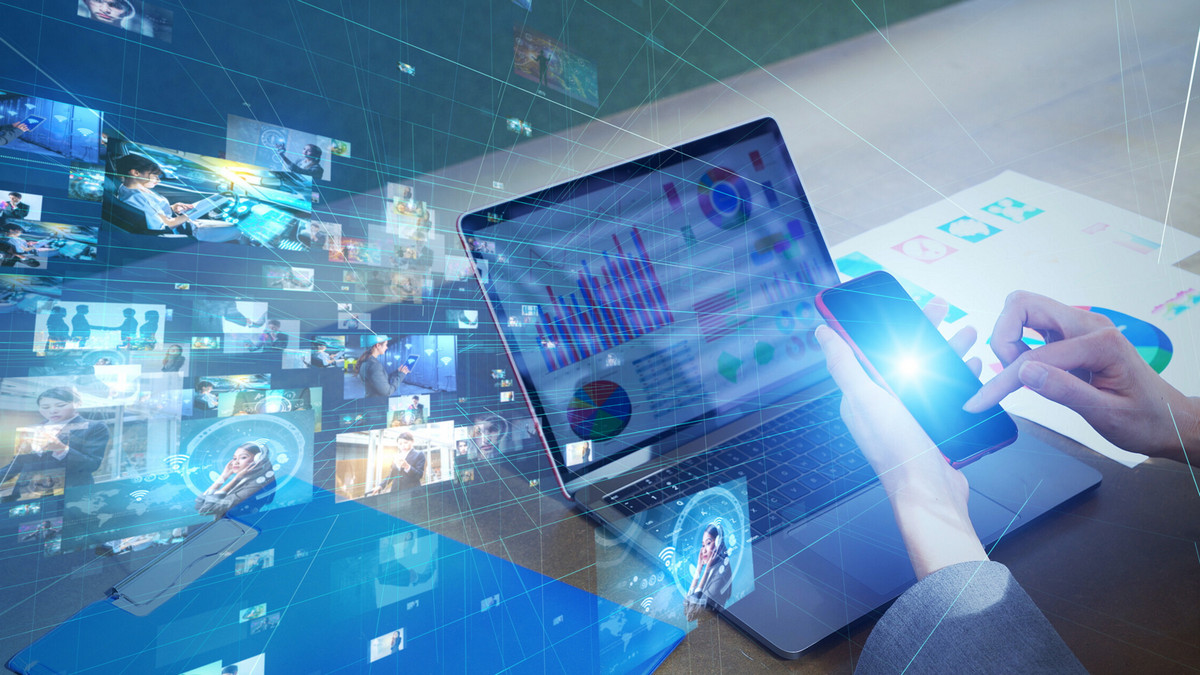With the rapid development of emerging industries such as the Internet of Things and mobile Internet, smart sensors are becoming more popular. Smart sensors are composed of sensing elements and signal conditioning circuit controllers that have data acquisition, conversion, analysis, and even decision-making functions. Intelligence can improve the accuracy of the sensor, reduce power consumption and volume, and achieve easier networking, thereby expanding the application range of the sensor and making its development more rapid and effective.
The Concept of Smart Sensors:
A smart sensor is a smart device that integrates sensors, actuators, and electronic circuits, or a device that integrates sensing elements and microprocessors, and has monitoring and processing functions. The most important feature of smart sensors is to output digital signals, which can be used for subsequent calculation and processing. The functions of smart sensors include signal perception, signal processing, data verification and interpretation, signal transmission and conversion, etc. The main components include Analog-to-Digital and Digital-to-Analog (A/D and D/A) converters, transceivers, microcontrollers, amplifiers, etc.
What are Sensors and Smart Sensors?
A sensor is a device that detects, measures, and converts specific physical quantities into electrical signals. When the sensor senses and sends information to the actuator, the actuator receives the signal and initiates the desired action to be performed.
An intelligent sensor refers to an intelligent sensor device that can perceive, collect, and independently judge, analyze, and process external environmental information. Smart sensors combine multi-component integrated circuits to exchange, store, and transmit information.
What are the Advantages of Smart Sensors?
-
Self-test, self-calibration, and self-diagnosis:
The self-diagnostics feature of Smart Sensors allow them to detect component failure. They use microprocessors to access stored measurement data for comparison and verification and then correct the system online.
-
Induction Fusion:
Smart sensors can measure multiple physical and chemical quantities at the same time, giving information that can more comprehensively reflect composition, state, and motion of a medium. For example, a fusion liquid sensor can simultaneously measure the temperature, flow, pressure, and density of a medium. There are also mechanical sensors that can simultaneously measure the three-dimensional vibration and acceleration, velocity, displacement, etc. of any set point on an object.
-
High precision:
The intelligent sensor has the ability to process information, correct system errors, compensate for random errors and reduce noise, thereby greatly improving the accuracy of the sensor.
-
High reliability:
The integrated sensor system eliminates some unreliable factors of the traditional structure and improves the anti-interference performance of the whole system. At the same time, it also has the functions of diagnosis, calibration, and data storage, with good stability.
-
Cost-effective:
Under the same precision requirements, the cost performance of multifunctional smart sensors is significantly higher than that of ordinary sensors with a single function, especially after integrating cheaper microcontrollers.
-
Diversified functions:
Smart sensors can realize multi-sensor and multi-parameter comprehensive measurement, and expand the measurement and use range through programming. It has the ability to adapt and change the range of output data according to the change of the detected object or condition. Having a digital communication interface and a variety of data output forms, it is suitable for various application systems, and data can be sent directly to the remote computer for processing.
-
Signal normalization:
The sensor's analog signal is normalized by an amplifier and then converted to a digital signal by an analog-to-digital converter. The microprocessor also performs digital normalization in various digital transmission forms such as serial, parallel, frequency, phase, and pulse.
Demand Growth Drivers for Smart Sensors:
- The growing popularity of IoT and Industrial IoT
- Trends in vehicle electrification and intelligence
- The popularity of wearable consumer electronics
- Advances in sensor technology and MEMS manufacturing processes
- The increasing use of various sensors in smartphones
- Strong demand for industrial automation and smart manufacturing
- Smart city, traffic, and building intelligence
Smart Sensor Market:
From 2020 to 2027, the global smart sensor market will grow at a CAGR of 18.6% and will reach $143.65 billion in 2027. Among them, the automotive industry is the largest application market for smart sensors in the world, accounting for about a quarter. During the forecast period 2020-2027, the automotive smart sensor market growth rate is expected to reach 21.7%. In addition, wearables and healthcare applications will bring near-term growth opportunities for smart sensors. From a technical point of view, micro-electromechanical systems (MEMS) account for more than 50% of the market. Nanoelectromechanical systems (NEMS) are expected to be the fastest-growing product type during the forecast period, but MEMS technology will remain dominant.
Smart Sensor Technology Trends for IoT Applications:
The rapid growth and popularization of the Internet of Things have driven strong demand for smart sensors. There are many Internets of Things application scenarios as follows:
-
Smart Wearable:
In many wearable devices, sensors are the core device and the value proposition of the device. Virtual augmented and mixed reality (VR/AR/MR) devices rely on a full suite of sensors, such as motion sensors, biological sensors, and environmental sensors, to enable users to interact with their surroundings. Virtual content requires a set of core sensors to realize human-environment interaction. Smart wearable devices include five modules: processor and memory, power supply, wireless communication, sensors, and actuators. Among them, the sensor is the innovative element of the five modules and the core of the communication between people and things. Thanks to advances in sensor technology, wearable devices can now enable more accurate data monitoring.
-
Smart Home:
The smart home is based on the residence, which integrates security monitoring, home appliance control, lighting control, background music, and voice control. It can be linked together to centralize management, to provide a more convenient, comfortable, safe, and energy-saving family living environment. The smart home system is composed of sensors, actuators, control centers, communication networks, etc., and obtains various data of the indoor environment through various types of sensors. Sensors used in homes include temperature sensors, image sensors, photoelectric sensors, and air sensors.
-
Smart City:
A smart city is a city that uses an information and communication technology (ICT) framework to improve urban management and encourage economic growth. ICT interacts with the connected network (IoT), which can receive, analyze, and transmit data about current conditions and events. The Internet of Things includes any device that can make cities more efficient or accessible, including cell phones, smart vehicles, security cameras, and sensors embedded in roads. The main characteristics of a smart city are physical and technological infrastructure, environmental monitoring and response capabilities, and smart services for citizens. The first is the technological base, which includes a plethora of smartphones and sensors connected by high-speed communication networks. The second tier consists of application-specific tools that require the right tools to transform raw data into alerts, insights, and actions. The third tier is the utilization by cities, businesses, and the public.
In a smart city, networks of sensors, cameras, wireless devices, and data centers form a critical infrastructure. Among them, sensing is the core of the intelligent infrastructure, sensors are hidden but ubiquitous components in the urban landscape, and are an important part of any intelligent control system. Sensor networks include acoustic, lidar, radar, 3D camera sensors, environmental sensors, flow sensors, gas sensors, and humidity and temperature sensors. Integrated sensor systems facilitate seamless interconnection with applications and centralized platforms. A sensor network built for a specific purpose can enable several other connected applications, such as environmental monitoring, and public safety, and this centralized network will help reduce repetitive investment costs and eliminate the need for multiple separate complex networks. Future smart cities mainly use four sensor technologies to expand their smart functions, including electronic sensors, infrared sensors, thermal sensors, proximity sensors, and lidar sensors.
-
Intelligent Transportation:
Intelligent transportation is the use of various intelligent technologies and equipment to promote the digitization, networking, and intelligence of transportation. Among them, networking is crucial to the development of intelligent transportation. The use of the Internet of Things can make all links and aspects of transportation successfully networked, which can not only effectively enhance traffic supervision and upgrade traffic services, but also further improve the existing traffic formats. The application of the Intelligent Transportation System (ITS) in urban traffic is reflected in the microscopic traffic information collection, traffic control, guidance, etc. It improves the efficiency of the traffic system by improving the effective use and management of traffic information, mainly by the input of information collection, strategy control, output execution, data transmission, and communication between subsystems and other subsystems. The information collection subsystem collects vehicle and road information through sensors, and the strategy control subsystem calculates the optimal solution according to the set target using the calculation method and outputs control signals to the execution subsystem to guide and control the passage of vehicles to achieve the preset the goal.
-
Smart Grid:
A smart grid is a power grid system that realizes energy resource development, conversion power generation, power transmission, distribution, power supply, power sales, and power consumption through information technology, and the goal of saving electricity. The benefits of smart grids lie in reducing carbon dioxide emissions, saving energy, and reducing power outages, and the investment required to build a smart grid is spent on terminal power distribution systems and terminal information systems on power facilities, a large part of which is invested in sensor networks above. The construction of a sensor network is an important part of smart grid transformation, and the key is to introduce sensors into the hierarchical structure of grids at all levels. The perception layer, network layer, and application layer of wireless sensor networks, (WSNs) are the three layers of the smart grid. Among them, the perception layer includes two-dimensional code tags and readers, RFID tags and readers, cameras, various sensors, and sensor networks. The function of the WSN perception layer is to perceive and identify objects and collect and capture information.
-
Smart Buildings:
Smart buildings are different from smart homes and refer specifically to non-residential buildings such as office buildings, shopping malls, and hotels. Devices in these buildings are connected to sensors that can provide energy consumption information and automatically make decisions to optimize operations. A range of networked sensors collects environmental information, as well as data about building operations and usage. This information can either be processed at the edge or sent to a central building management system (BMS) running locally or in the cloud. This information is then used to trigger automated actions to adjust the HVAC system, lighting system, and many other devices in the building. Buildings can become intelligent by creating cross-connections between different subsystems with sensors, actuators, and controllers.
-
Smart Agriculture:
Smart farming, also known as precision farming, uses minimal resources such as water, fertilizer, and seeds to maximize yields. By deploying sensors and mapping fields, agricultural workers are beginning to understand the growth process of crops from a microscopic perspective, scientifically conserve resources, and reduce their impact on the environment. Many sensing technologies are used in precision agriculture, and they provide data that can help monitor and optimize crops and adapt to changing environmental factors. These include position sensors, optical sensors, electrochemical sensors, mechanical sensors, soil moisture sensors, and airflow sensors.
-
Smart Healthcare:
Medical sensors are often used in expensive medical devices, so medical electronic sensors are a high-value type of sensor. Medical sensors are classified according to their working principles and application forms. According to the working principle, it is divided into the physical sensor, chemical sensor, biosensor, and bioelectrode sensor. According to the application form, it is divided into the implantable sensor, temporary implantable sensor, in vitro sensor, a sensor for external equipment, and edible sensor. With the development of material technology and electronic technology, flexible matrix materials have gradually entered the medical market with their advantages such as flexibility, bendability, extension, and wearability. Flexible sensors have the advantages of flexible matrix materials and are adaptable to the human body, and have good adaptability to both wearable devices and implantable devices. Flexible sensors can be used in smart band-aids, smart bandages, flexible oximeters, and flexible wearable ionic humidity sensors.
-
Environmental Monitoring:
The application of sensor technology in environmental detection is reflected in two aspects: Physical or chemical reaction with pollutants in the detection material to determine whether there is a pollutant in the detection material. Chemical signals are converted into electrical signals. The application of sensor technology has greatly improved the reliability of environmental detection results. According to different detection methods, sensor technology can be divided into optical sensors and electrochemical sensors. Different reaction mechanisms can be divided into biological sensors and immune sensors. Different detection objects can be divided into liquid sensors and gas sensors.
The basic principle of biosensors is to use functional genes, antibodies, and other biological materials as sensitive materials, use a signal acquisition device to collect biochemical information, and analyze the biochemical information converted into electrical signals. With the continuous development of biosensor technology, there are more and more sensitive materials and sensor elements, which help to accurately identify more pollutants in the environment. Compared with conventional sensors, biosensors are more selective, easier to operate, faster to test, and more accurate in results. Biosensor technology is mostly used in atmospheric environment detection, including sulfur dioxide detection, nitrogen dioxide detection, heavy metal ion detection, and pesticide residue detection.
-
Smart Manufacturing:
One of the typical applications of intelligent sensing in the manufacturing process is reflected in the CNC machine tools widely used in the machinery manufacturing industry. Modern CNC machine tools are equipped with high-performance sensors that detect displacement, position, speed, pressure, etc. They can monitor processing status, tool status, wear, and energy consumption in real-time to achieve flexible error compensation and self-correction. Developing trends of intelligent CNC machine tools include the adoption of visual sensing and monitoring technology, which makes intelligent monitoring of CNC machine tools more convenient.
There are many applications of intelligent sensing in the automotive manufacturing industry. Taking machine vision based on optical sensing as an example, the main applications in the industrial field are vision measurement, vision guidance, and vision inspection. In the automobile manufacturing industry, visual measurement technology can ensure the qualified products of the factory by measuring the key dimensions, surface quality, and assembly effect of the product. Vision-guided technology can significantly improve the automatic handling, the best matching assembly, and the precise hole making, by guiding the machine to complete the manufacturing and body assembly with high efficiency and quality. Visual inspection technology can monitor the stability of the body manufacturing process and can be used to ensure product integrity and traceability, reducing manufacturing costs. The sensors in the high-end equipment industry are mostly those used in equipment operation and maintenance and health management. The intelligent sensors equipped with aero-engines enable the control system to have fault self-diagnosis and fault handling capabilities and improve the system's ability to cope with complex environments and precise control.
The fields of industrial electronics, production, handling, inspection, and maintenance all use intelligent sensors, such as on robotic arms, Automated Guided Vehicle (AGV) navigation vehicles, Automated Optical Inspection (AOI) detection systems, and other equipment. In the field of consumer electronics and medical electronics, the applications of smart sensors are more diverse. For example, the more common smart sensors in smartphones include distance sensors, light sensors, gravity sensors, image sensors, three-axis gyroscopes, and electronic compasses. The most basic function of wearable devices is to realize motion sensing through sensors, usually built-in MEMS accelerometers, heart rate sensors, pulse sensors, gyroscopes, MEMS microphones, and other sensors. A smart home involves technologies such as position sensors, proximity sensors, liquid level sensors, flow and speed control, environmental monitoring, security sensing, and other sensors.







.jpg)
.jpg)
.jpg)

.jpg)


